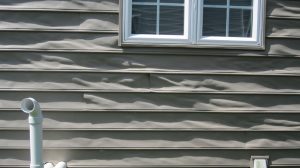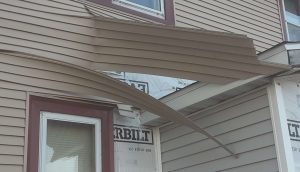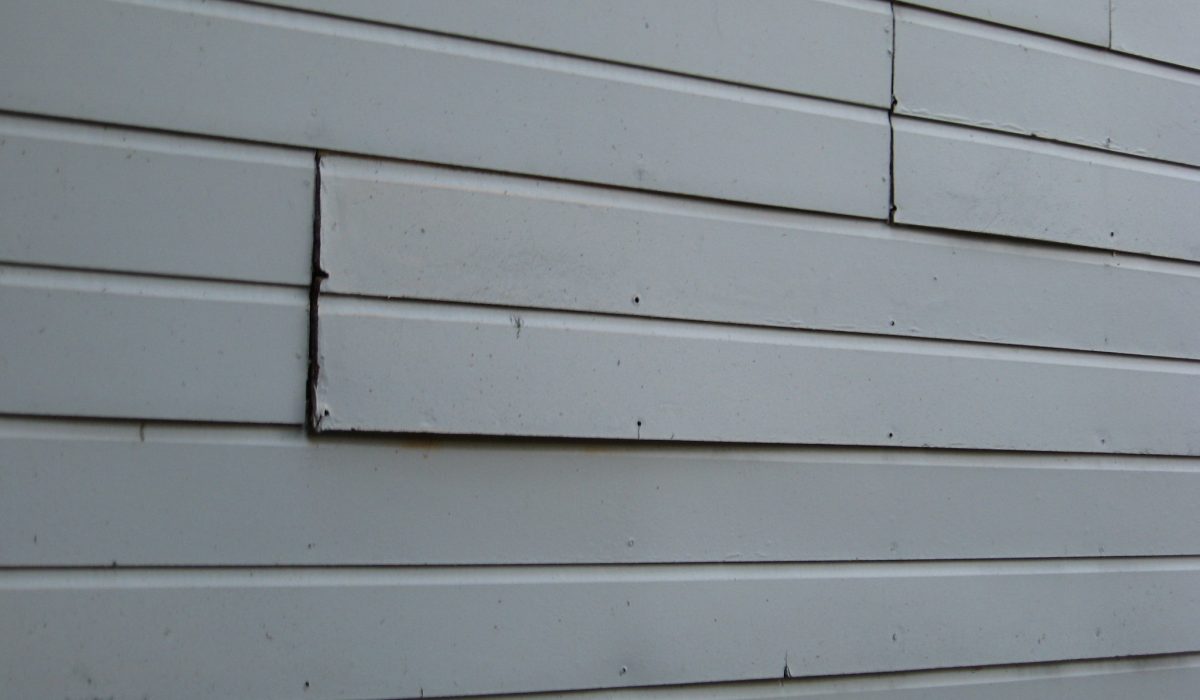- By Sydni
- Construction Blog
- 0 Comment
What is "Buckling" in Home Siding? Understanding and Addressing a Common Issue
As a homeowner, you’re likely familiar with the importance of maintaining your home’s exterior. One common problem that can arise with siding is “buckling.” This issue not only affects the appearance of your home but can also signal underlying damage that needs attention. But what does buckling mean when it comes to siding, why does it happen, and what you can do to fix it?
What is Buckling in Siding?
Buckling refers to the visible warping, bending, or distortion of siding material on a home. Instead of lying flat and snug against the exterior walls, buckled siding looks wavy, swollen, or pushed out of place. This unsightly deformation is more than just a cosmetic issue—it can indicate serious problems that may lead to further damage if not addressed.
Why Does Siding Buckle?
Several factors can cause siding to buckle. Understanding these causes can help you prevent the issue or address it before it worsens.
- Improper Installation: One of the most common reasons for buckling is improper installation. Siding materials, especially vinyl, expand and contract with temperature changes. If the siding is nailed too tightly to the house, it won’t have the room to move, leading to buckling when the material tries to expand.
- Moisture Exposure: Moisture is another significant cause of buckling. When water seeps behind the siding—due to improper sealing, damaged weather barriers, or other reasons—it can cause the material to warp. This is particularly true for wood siding, which absorbs moisture and swells, leading to buckling.
- Thermal Expansion: Siding materials naturally expand and contract with temperature fluctuations. If the siding is not given adequate space to move, or if it’s installed in extreme temperatures, the material can buckle. This is often seen in areas with significant seasonal temperature changes, like Arlington and Stafford, VA.

- Foundation Shifts: Over time, a home’s foundation can shift or settle, especially in regions prone to heavy rain or drought. These movements can cause the siding to buckle as the walls of the house shift or warp slightly.
- Material Defects: Sometimes, buckling can result from defects in the siding material itself. Poor-quality materials may not withstand environmental stresses as well, leading to early signs of warping or buckling.
The Risks of Ignoring Buckling Siding
While buckling may start as a minor issue, it can lead to significant problems if left unaddressed.
- Water Damage: Buckled siding can create gaps where water can seep into your home’s structure. This can lead to moisture problems, including rot, mold growth, and even structural damage over time.
- Energy Efficiency Loss: Damaged siding can compromise your home’s insulation, making it less energy efficient. This can lead to higher heating and cooling costs as your HVAC system works harder to maintain a comfortable temperature.
- Decreased Curb Appeal: Buckled siding can dramatically reduce the aesthetic appeal of your home. This can be particularly concerning if you’re planning to sell your home, as it can lower your property value and make it harder to attract potential buyers.
How to Fix Buckling Siding:
If you notice buckling in your siding, it’s essential to address the issue as soon as possible. Here are some steps you can take:
- Inspection: Start by conducting a thorough inspection of the buckled areas. Look for signs of moisture damage, improper installation, or other potential causes. It might be worth hiring a professional to assess the extent of the damage and identify the root cause.
- Repair or Replace: Depending on the severity of the buckling, you may need to repair or replace the affected sections of siding. For minor buckling caused by improper installation, you might be able to fix the issue by adjusting or reinstalling the siding. However, if the buckling is due to moisture damage or material defects, replacing the damaged siding may be necessary,
- Prevent Future Issues: To prevent future buckling, ensure that your siding is installed correctly with adequate space for expansion and contraction. Regular maintenance, such as cleaning your siding and checking for signs of damage, can also help catch potential problems early.
When to Call a Professional:
While some homeowners may feel comfortable tackling minor siding repairs themselves, it’s often best to consult with a professional siding contractor, especially if the buckling is severe or widespread. A professional can assess the damage, identify the cause, and recommend the best course of action to prevent further issues.

Buckling siding is a common problem that can have serious consequences if not addressed promptly. By understanding what buckling is, why it happens, and how to fix it, you can protect your home from further damage and maintain its appearance and value. If you notice any signs of buckling in your siding, don’t wait—take action to prevent small issues from becoming big problems.
At Insured Roofs, we’re here to help homeowners in Arlington, Stafford, and the greater Northern Virginia area keep their homes in top condition. Whether you need a siding inspection, repair, or replacement, our experienced team is ready to assist. Contact us today to schedule a consultation and ensure your home’s siding is in the best possible shape.

